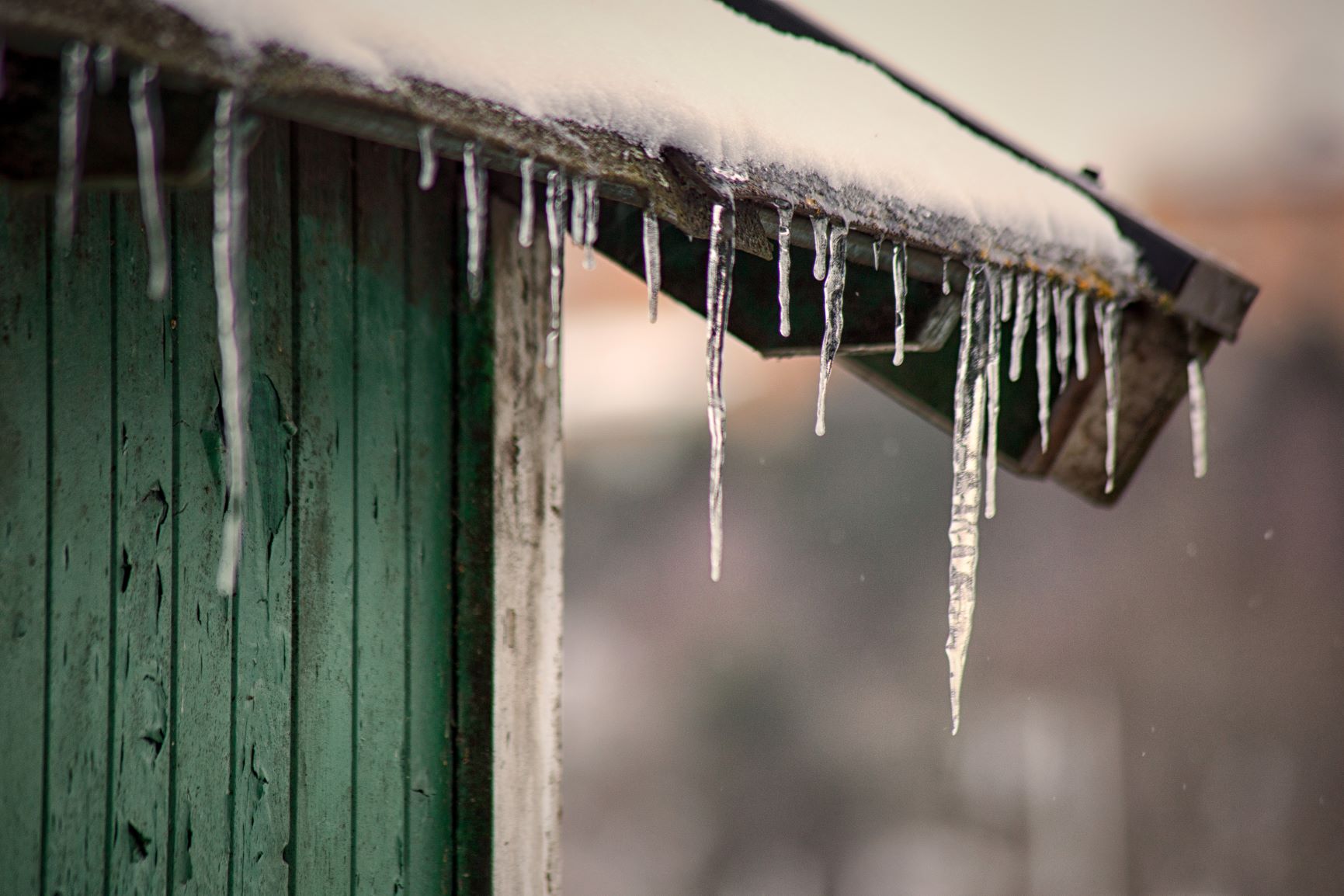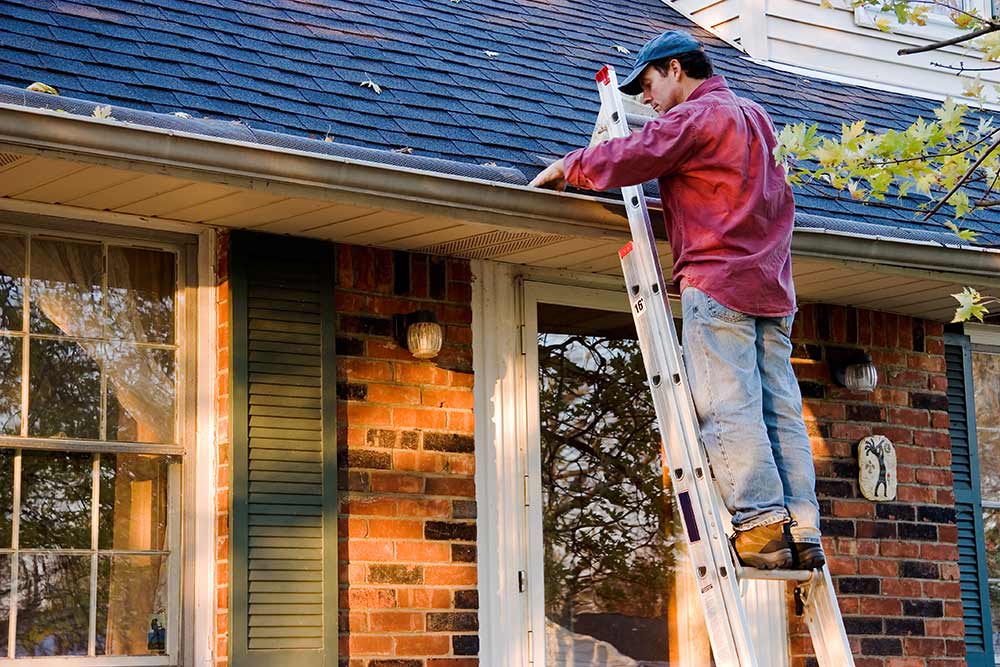
Ice Dams – What they are and what to do if it happens to your roof
Stay Ahead of Ice Dams

Keep reading to learn more about how ice dams form so that you can prevent them altogether or make a quick fix if they’ve already formed.
TOH Tip: To keep ahead of ice dam damage, snap photos where you see frosty buildup. Use the pictures to help target an interior inspection, during which you should check for leaks.
PHOTO BY NORMAN POGSON/ALAMY
Life of an Ice Dam: Birth

Here’s a breakdown of the conditions that lead to the formation of ice dams: First, heat collects in the attic and warms the roof, except at the eaves.
Life of an Ice Dam: Growth

Next, snow melts on the warm roof and then freezes on the cold eaves.
Life of an Ice Dam: Maturity

Finally, ice accumulates along the eaves, forming a dam. Meltwater from the warm roof backs up behind it, flows under the shingles, and into the house.
Now that you know how ice dams form, here’s a quick and easy way to prevent them.
Prevent Ice Dams: Use Heated Cables

Attached with clips along the roof’s edge in a zigzag pattern, heated cables help prevent ice dams that lift shingles and cause leaks. This solution allows you to equalize your roof’s temperature by heating it from the outside instead of blowing in cold air from the inside (as we mention next in “Fast Fixes”). Just be sure to install the cables before bad weather hits.
For more information on this and other electronic snow and ice melters, see Plug-in Snow Busters.
Keep reading for fast fixes you can do yourself after a dam has already formed.
Fast Fixes for Ice Dams: Blow in Cold Air

Hacking away at ice dams with a hammer, chisel, or shovel is bad for your roofing—and dangerous for you. And throwing salt on them will do more to harm to your plantings than to the ice. Short of praying for warm weather, here are stop-gap measures we recommend.
Take a box fan into the attic and aim it at the underside of the roof where water is actively leaking in. This targeted dose of cold air will freeze the water in its tracks. “You’ll stop the leak in a matter of minutes,” says TOH general contractor Tom Silva.
For more advice from Tom, see Stopping Ice Dams.
Fast Fixes for Ice Dams: Rake It

Pull off snow with a long-handled aluminum roof rake while you stand safely on the ground. A rake with wheels, like the one shown here, will instantly change the exterior temperature of your roof without damaging shingles.
Fast Fixes for Ice Dams: Deice It

You can also diminish the damage after the dam has formed with…panty hose! Fill the leg of discarded pair of panty hose with a calcium chloride ice melter. Lay the hose onto the roof so it crosses the ice dam and overhangs the gutter. If necessary, use a long-handled garden rake or hoe to push it into position. The calcium chloride will eventually melt through the snow and ice and create a channel for water to flow down into the gutters or off the roof.
Next up, a list of long-term fixes that will help you get rid of your ice dams for good.
Permanent Fixes for Ice Dams

Getting rid of ice dams for good is simple, in principle: Just keep the entire roof the same temperature as the eaves. You do that by increasing ventilation, adding insulation, and sealing off every possible air leak that might warm the underside of the roof.
By taking care of common trouble spots, listed here in order of priority, you should enjoy dam-free winters and use less energy to boot:
1. Ventilate Eaves And Ridge. A ridge vent paired with continuous soffit vents circulates cold air under the entire roof. Both ridge and soffit vents should have the same size openings and provide at least 1 square foot of opening for every 300 square feet of attic floor. Place baffles at the eaves to maintain a clear path for the airflow from the soffit vents.
2. Cap the Hatch. An unsealed attic hatch or whole-house fan is a massive opening for heat to escape. Cover them with weatherstripped caps made from foil-faced foam board held together with aluminum tape.
3. Exhaust to the Outside. Make sure that the ducts connected to the kitchen, bathroom, and dryer vents all lead outdoors through either the roof or walls, but never through the soffit.
4. Add Insulation. More insulation on the attic floor keeps the heat where it belongs. To find how much insulation your attic needs, check with your local building department.
5. Install Sealed Can Lights. Old-style recessed lights give off great plumes of heat and can’t be insulated without creating a fire hazard. Replace them with sealed “IC” fixtures, which can be covered with insulation.
6. Flash Around Chimneys. Bridge the gap between chimney and house framing with L-shaped steel flashing held in place with unbroken beads of a fire-stop sealant. Using canned spray foam or insulation isn’t fire safe.
7. Seal and Insulate Ducts. Spread fiber-reinforced mastic on the joints of HVAC ducts and exhaust ducts. Cover them entirely with R-5 or R-6 foil-faced fiberglass.
8. Caulk Penetrations. Seal around electrical cables and vent pipes with a fire-stop sealant. Also, look for any spots where light shines up from below or the insulation is stained black by the dirt from passing air.
Good luck from your friends from Cellar Door!!
Illustrations by Yuko Shimizu, Narda Lebo



